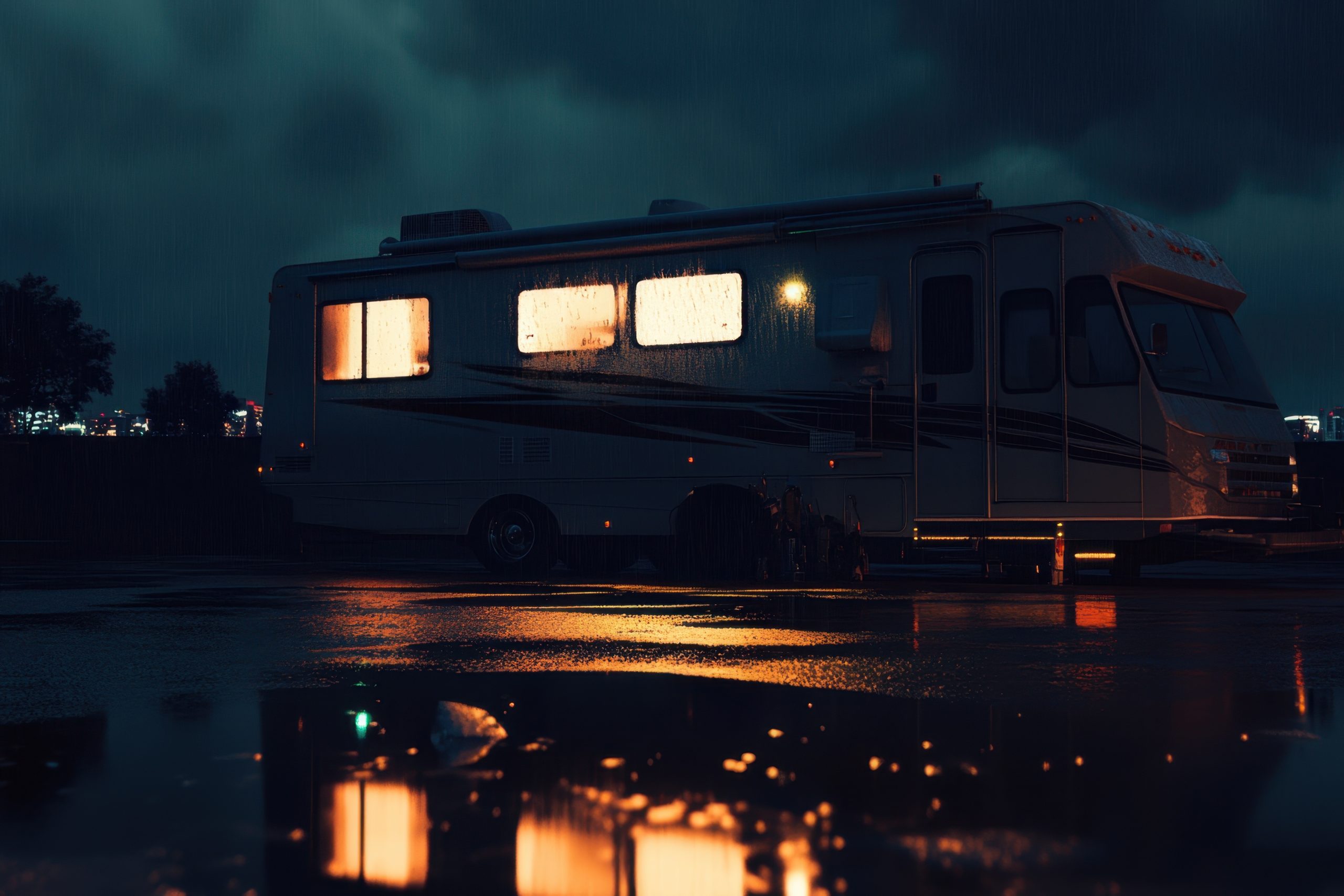When someone wants to emphasize how rare something is, they’ll often say, “You’re more likely to be struck by lightning.”
And while it is rare for a person to be struck (about 20 fatalities per year in the U.S.), lightning still causes over $1.35 billion in property damage annually. If you travel in an RV, spend time boating, or ride powersport vehicles, you could be at greater risk than you think—not just for injury, but for costly damage.
Unfortunately, there are also plenty of misconceptions about lightning safety that can put RVers, boaters, and riders in harm’s way. Below, we debunk some common myths and share tips to keep you and your recreational vehicles safe during storms.
Myth 1: An RV or Boat Roof Will Protect You Like a Car Does
Unlike standard vehicles, most RVs don’t have the all-metal frame that creates a protective “Faraday cage” effect. While you may be shielded from direct contact, lightning can still damage your RV’s roof, electronics, and appliances.
Boats face similar risks—lightning often strikes masts or metal hardware, traveling through onboard wiring. Even if no one is hurt, the cost of repairs can be significant.
What to do:
- In an RV: Unplug from shore power, retract awnings, and stay inside, away from windows and metal fixtures.
- On a boat: If possible, dock and disembark. If offshore, remain low in the cabin and avoid contact with electrical panels or metal objects.
- With powersport vehicles: ATVs, dirt bikes, and personal watercraft offer no protection. Seek shelter in an enclosed vehicle or building.
Myth 2: Smaller Vehicles Like ATVs or Jet Skis Are Too Low to Attract Lightning
Height isn’t the only factor. Lightning can strike the ground or water near you, and the electrical current can spread outward up to 100 feet. That means riding exposed in a storm—even on low-profile vehicles—puts you in danger.
What to do:
- At the first sound of thunder, seek enclosed shelter.
- Avoid riding in open fields or across open water during storm conditions.
Myth 3: Being Indoors Is Always 100% Safe
If you’re in your RV or boat cabin during a storm, you’re safer than being outside—but you’re not completely risk-free. Lightning can travel through wiring and plumbing, putting anyone who touches electronics, outlets, or fixtures at risk.
What to do:
- Avoid using corded electronics and appliances during storms.
- Stay clear of plumbing and metal fittings until the storm passes.
Protecting Your Vehicles From Lightning Damage
Even if you’re out of harm’s way, your vehicles and equipment can still take a hit. Reduce risks by:
- Using surge protectors to shield RV electronics from sudden voltage spikes.
- Installing grounding systems on boats to divert lightning strikes safely.
- Storing ATVs and jet skis in garages or covered shelters when not in use.
- Reviewing your recreational insurance policy to ensure it covers lightning, wind, and storm damage.
Why Recreational Insurance Matters
Lightning damage to RVs, boats, or powersport vehicles is typically only covered under comprehensive recreational insurance, not liability-only policies. Without it, you may face expensive repairs or even total losses out of pocket.
Recreational Insurance: Stay Protected with Happy Camper Insurance
Lightning storms are unpredictable—but your coverage shouldn’t be. Whether you’re exploring in your RV, boating, or riding the trails, Happy Camper Insurance can help you review your current recreational insurance or find the right policy to keep your adventures protected.
Contact Happy Camper today to review your recreational insurance or get a free quote for your RV, boat, or powersport vehicle.



